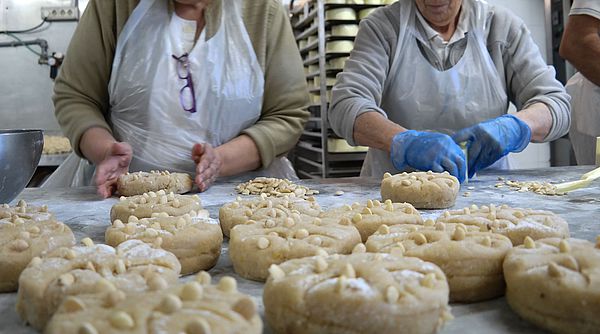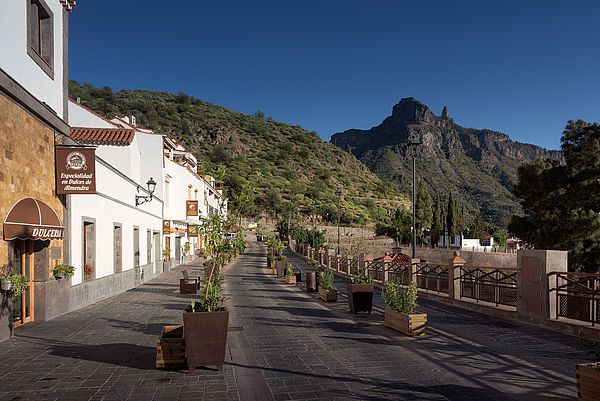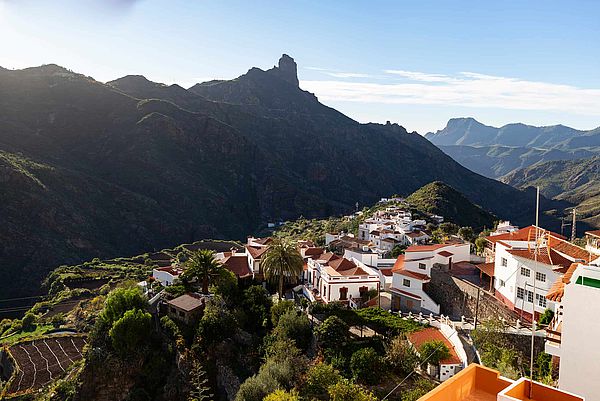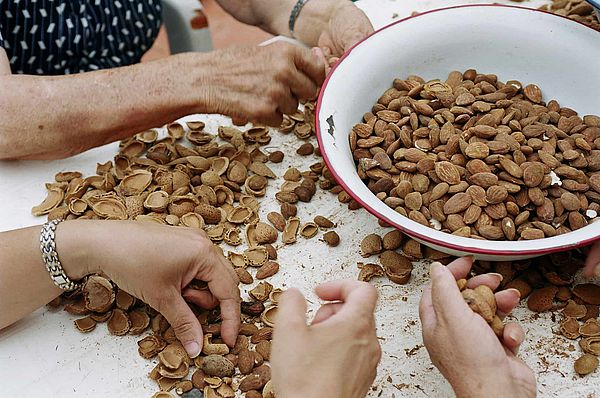Cheeses and fine wines are the two standout products we can associate today with the summit municipality of Tejeda (whose town sits a little over a thousand metres up, and must not be confused, 500 metres further up, with the Parador hotel and the Cruz de Tejeda). But there is one word that defines a food, which some have even called “the healthiest and most beneficial dried fruit for humans” and which on this island is synonymous with its place name (although not etymologically, don’t take us that literally!): the almond.

If we ask people in Gran Canaria what there is in Tejeda, they will tell us “almendreros”, the locals’ word for almond tree, even though the landscape around the summit has an array of rich indigenous Canary flora. And if we ask them what we can buy in Tejeda, they will say “almond bienmesabe” (or even go a little further: “almond polvorones”, “stuffed almonds” and other such sweet, tasty choices with this illustrious dried fruit as its main ingredient).
And we still have to mention, and we hadn’t forgotten about it: marzipan or “marzipan from de Tejeda”. We have saved it till last to go into a little more detail. It is uncommon for the women in the village not to make it at home, as many of them, especially those who were young girls around the 1960s or before, actually had jobs collecting almonds. “My grandma would always make it for Christmas and in September too for the Fiesta del Socorro”, relates Rosa Mari Medina, the best known confectioner in the village.


Families that had almond trees in Tejeda, or got almonds from where they worked on neighbouring lands, for example, would make their own almond cakes, which they crushed and cooked, with a similar weight of sugar. They would make their marzipan at the village confectioner’s oven.
About the time the so called “late maize” crop was seeded, in September, it would be normal for the girls to be paid to go around collecting almonds in places like Hoya de la Vieja, where they would sleep on soft broom in caves. “We might stay there for four or five days at a time. The men would knock the almonds off with sticks and the women would pick them up. We put them in baskets and then into sacks”, recalls one of the girls from the 60s.

n this case, the almond trees in Hoya de la Vieja belonged to a neighbour from Los Manantiales who would also be out collecting, as well as sleeping in the cave. She also fed the rest of the women with a simple potato and onion broth, and especially, a mojo sauce with almond and tomato which became known as the “mojo de Paca Navarro”, which they would eat with gofio maize meal mashed up with water.
This lady, Francisca Navarro, still treasured this age old recipe at the end of last century in her eighties, assuring us that she had learnt it from her mother, who in turn got it from “Aunt Francisca Pérez, my mother’s aunt, well over a hundred years ago”. She simply referred to it as “mojo”, but those who knew her called it “mojo de Paca Navarro”, especially those women who were paid to go with her and pick almonds.